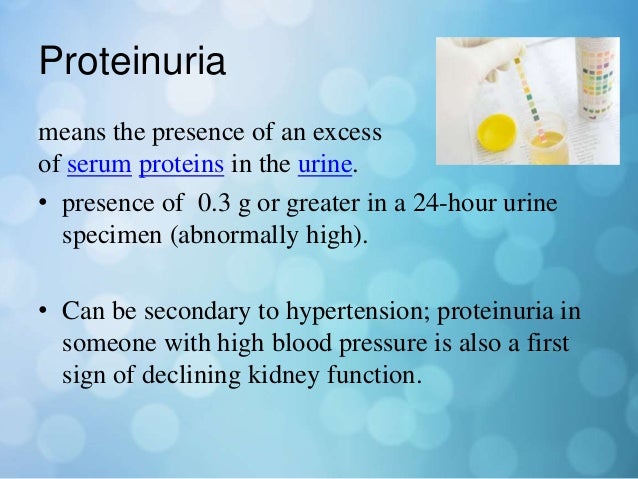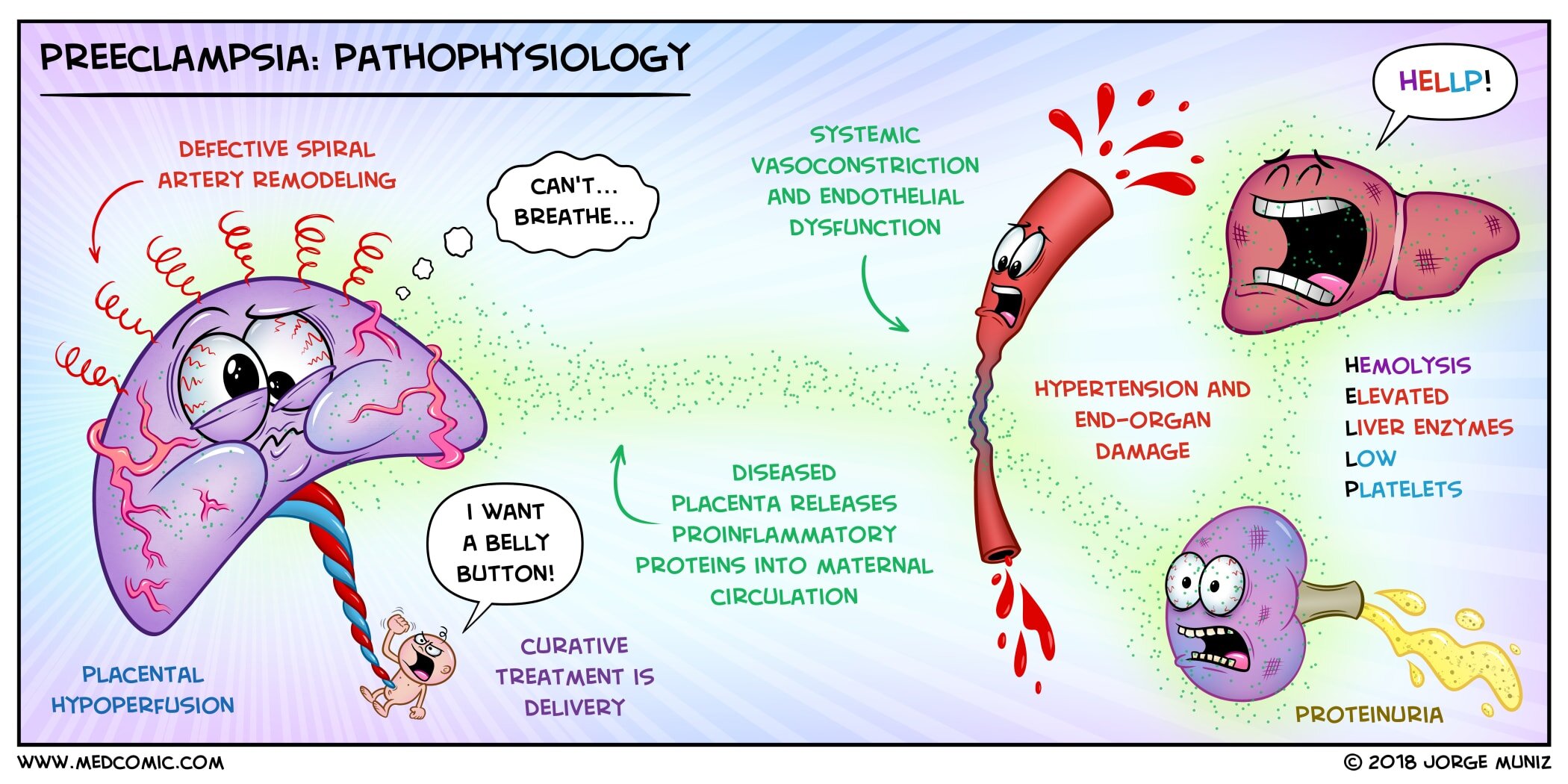why does preeclampsia cause protein in urine Preeclampsia eclampsia proteinuria
Preeclampsia is a serious condition that affects pregnant women, characterized by high blood pressure and damage to organs such as the liver and kidneys. It can be life-threatening for both the mother and the baby if left untreated. Today, we will explore some key aspects of pre-eclampsia, its pathophysiology, and the potential risks associated with this condition.
Pre-Eclampsia
Pre-eclampsia is a complex disorder that typically arises after the 20th week of pregnancy. It is diagnosed when a pregnant woman develops high blood pressure (greater than 140/90 mmHg) and shows signs of damage to other organ systems, such as the kidneys or liver. Symptoms may include swelling in the hands and face, sudden weight gain, headaches, and changes in vision.
 The exact cause of pre-eclampsia is still unknown, but researchers believe it may be related to problems with the placenta. The placenta plays a crucial role in delivering oxygen and nutrients to the fetus. In pre-eclampsia, the blood vessels in the placenta don’t develop properly or function as they should, leading to reduced blood flow to the baby and inadequate nourishment.
The exact cause of pre-eclampsia is still unknown, but researchers believe it may be related to problems with the placenta. The placenta plays a crucial role in delivering oxygen and nutrients to the fetus. In pre-eclampsia, the blood vessels in the placenta don’t develop properly or function as they should, leading to reduced blood flow to the baby and inadequate nourishment.
Pathophysiology of Preeclampsia
The pathophysiology of preeclampsia involves a complex interplay of factors that contribute to the development of high blood pressure and organ damage. One of these factors is the release of substances from the placenta into the mother’s bloodstream, including proteins and inflammatory molecules. These substances can trigger widespread inflammation and vasoconstriction, leading to the characteristic symptoms of pre-eclampsia.
 Furthermore, pre-eclampsia is closely associated with endothelial dysfunction, which affects the lining of blood vessels. The damaged endothelial cells lose their ability to relax and regulate blood flow, further contributing to hypertension. In addition to these factors, genetics, immune system abnormalities, and underlying health conditions may also play a role in the development of pre-eclampsia.
Furthermore, pre-eclampsia is closely associated with endothelial dysfunction, which affects the lining of blood vessels. The damaged endothelial cells lose their ability to relax and regulate blood flow, further contributing to hypertension. In addition to these factors, genetics, immune system abnormalities, and underlying health conditions may also play a role in the development of pre-eclampsia.
It is important to note that pre-eclampsia can have serious complications for both the mother and the baby. For the mother, these may include seizures (eclampsia), placental abruption (the separation of the placenta from the uterus), stroke, and organ damage. For the baby, pre-eclampsia can restrict the flow of blood and nutrients, leading to growth problems, premature birth, and low birth weight. In severe cases, it can even result in stillbirth or neonatal death.
Early detection and proper management of pre-eclampsia are crucial to minimize the risks associated with this condition. Regular prenatal check-ups, including blood pressure monitoring and urine tests, are essential for identifying any warning signs. If pre-eclampsia is suspected, healthcare providers may recommend bed rest, blood pressure medications, and close monitoring of the mother and baby.
In conclusion, pre-eclampsia is a serious condition that pregnant women should be aware of. Its pathophysiology involves a complex interplay of factors that lead to high blood pressure and organ damage. Recognizing the symptoms, seeking timely medical care, and proactively managing the condition can significantly improve outcomes for both the mother and the baby. If you have any concerns or questions related to pre-eclampsia, it is always best to consult with your healthcare provider for personalized guidance and care.
If you are searching about Εγκυμοσύνη: ο έλεγχος της πίεσης του αίματος στο σπίτι να μειώσει την you’ve came to the right page. We have 5 Pics about Εγκυμοσύνη: ο έλεγχος της πίεσης του αίματος στο σπίτι να μειώσει την like Εγκυμοσύνη: ο έλεγχος της πίεσης του αίματος στο σπίτι να μειώσει την, Preeclampsia blood pressure chart - hohpamonster and also Preeclampsia and Eclampsia | Health Life Media. Read more:
Εγκυμοσύνη: ο έλεγχος της πίεσης του αίματος στο σπίτι να μειώσει την
 wikihealth.grPreeclampsia And Eclampsia | Health Life Media
wikihealth.grPreeclampsia And Eclampsia | Health Life Media
 healthlifemedia.compreeclampsia eclampsia hypertension nk trophoblasts induced arteries pathophysiology preeklampsia placenta trophoblast extravillous placental risk invasion remodeling phase menstruation abnormal vascular
healthlifemedia.compreeclampsia eclampsia hypertension nk trophoblasts induced arteries pathophysiology preeklampsia placenta trophoblast extravillous placental risk invasion remodeling phase menstruation abnormal vascular
Preeclampsia Blood Pressure Chart - Hohpamonster
 hohpamonster.weebly.comPreeclampsia: Pathophysiology | Medcomic
hohpamonster.weebly.comPreeclampsia: Pathophysiology | Medcomic
 www.medcomic.compreeclampsia pathophysiology medcomic mnemonics hypertension muniz jorge
www.medcomic.compreeclampsia pathophysiology medcomic mnemonics hypertension muniz jorge
Pre-eclampsia
 www.slideshare.netpreeclampsia eclampsia proteinuria
www.slideshare.netpreeclampsia eclampsia proteinuria
Preeclampsia: pathophysiology. Preeclampsia eclampsia proteinuria. Preeclampsia and eclampsia